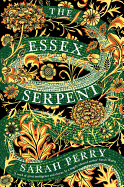
| Publisher: | Custom House/HarperCollins | |
| Genre: | General, Gothic, Fiction, Historical | |
| ISBN: | 9780062666376 | |
| Pub Date: | June 2017 | |
| Price: | $26.99 |
| Starred | Fiction |
by Sarah Perry
Following her husband's death, Cora Seaborne leaves London in search of the dirt, earth, fossils, rocks and trees that once entertained her as a young girl. Her arrival in Essex coincides with growing rumors of the return of the Essex Serpent, a great beast living in the Blackwater that is said to claim human lives. A budding naturalist whose passions were squashed by her cruel husband, Cora sets off in search of the mythical beast, but finds instead a local parson, William Ransome, with whom she forms an unlikely friendship.
Sarah Perry's The Essex Serpent transpires over 11 months in the late 19th century, told through the stories of vibrant supporting characters. But the novel is much larger than a single year, person or place as Perry explores questions of science and faith, passion and reason, good and evil, friendship and animosity, past and present, humor and fear. This complex and beautiful novel perfectly captures the tension that exists between opposing forces at every moment of a life, be it large or small. With a quietude that reflects the beauty of the landscapes she describes, and a fortitude that captures the power of a woman's mind, Sarah Perry has proven herself a writer who can dazzle with luminous prose in The Essex Serpent. Here is a novel that will remind readers that they can be, like Perry's perfectly flawed characters, "children of the earth and lost in wonder." --Kerry McHugh, blogger at Entomology of a Bookworm
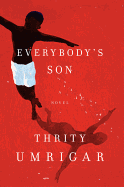
| Publisher: | Harper | |
| Genre: | Contemporary Women, Family Life, Literary, Fiction | |
| ISBN: | 9780062442246 | |
| Pub Date: | June 2017 | |
| Price: | $26.99 |
| Fiction |
by Thrity Umrigar
Thrity Umrigar (The Story Hour) is best known for her moving novels that delve into class, privilege and family. In Everybody's Son, she also tackles issues of race and identity. At its heart, though, it is a story about the bonds between children and parents--both biological and adoptive--and the struggle to be true to oneself.
Ten-year-old Anton lives in the projects with his mother, Juanita. After she leaves him alone for seven days with no food, Anton breaks a window to escape the oppressive heat in their apartment. Police find Juanita in a crack house where her drug dealer left her, half-naked and barely conscious.
Anton's new life with his foster parents is the exact opposite of everything he has ever known. Judge David Coleman and his wife, Delores, are thrilled to have a child in their home again, after the tragic death of their son. David uses his power and connections to adopt Anton.
Though Anton comes to love his new family and grows up with incredible advantages, he always feels, deep inside, torn between two worlds. His college girlfriend, Carine, tells him, "I can't decide if you're the blackest white man I've ever met or the whitest black man." The truth of these words crushes Anton, who will eventually have to come to terms with his history.
Umrigar's gorgeous language creates a vibrant world. She has crafted another emotionally intense and compelling novel that explores difficult moral questions as well as family bonds. --Suzan L. Jackson, freelance writer and author of Book by Book blog

| Publisher: | Riverhead | |
| Genre: | General, Literary, Fiction, Historical, Jewish | |
| ISBN: | 9780399185670 | |
| Pub Date: | June 2017 | |
| Price: | $26 |
| Fiction |
by Jillian Cantor
Katie Nelson never shared her father's passion for stamp collecting. But as she tagged along with him on countless Sunday-morning drives around Los Angeles during her childhood, she came to understand the reason for his never-ending quest--or so she thought. Their trips to yard sales, thrift shops and estate sales yielded hundreds of old letters and sheets of yellowed stamps, and Katie always imagined her father, Ted, simply loved the thrill of the hunt. However, when she moves Ted, now widowed, to a memory-care facility, she sorts through his collection and finds an intriguing item: an unsent letter with a highly unusual German stamp from the 1930s. Jillian Cantor (Margot, The Hours Count) unravels the story of the stamp alongside Katie's family history in her third novel, The Lost Letter.
Cantor shifts back and forth between two eras: that of the Anschluss (Hitler's annexation of Austria) and Katie's quest to find out more about the stamp's provenance in 1980s Los Angeles. The World War II narrative follows the journey of Kristoff, a young artist working as an apprentice to stamp engraver Frederick Faber in the mountain town of Grotsburg. Faber's skill has brought him professional recognition and a comfortable living, but his abilities and his Jewish heritage also attract the unwelcome attention of the Nazis.
Both stories offer glimmers of hope, whether through small acts of resistance or larger stories of redemption. Cantor's conclusion skillfully draws together two sets of world events--including the fall of the Berlin Wall--and her characters' intertwined personal histories. The Lost Letter is a poignant story of love, sacrifice and the bravery of everyday resistance. --Katie Noah Gibson, blogger at Cakes, Tea and Dreams
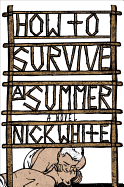
| Publisher: | Blue Rider Press | |
| Genre: | Literary, Coming of Age, Fiction, LGBT, Gay | |
| ISBN: | 9780399573682 | |
| Pub Date: | June 2017 | |
| Price: | $26 |
| Fiction |
by Nick White
Will Dillard, a Midwestern graduate student in film studies, is jolted from his quiet life upon learning about a new horror movie called Proud Flesh. His friend Bevy describes the slasher flick as "Friday the 13th meets Sleepaway Camp meets I don't know what." But for Will, the terror is far worse.
Proud Flesh, grotesquely twisted from a memoir written by one of the volunteer counselors, transports Will back to the fateful summer his father sent him to Camp Levi, a program whose aim was to cure homosexuality. Contrary to its objective, Camp Levi did no curing, instead leaving its participants with gaping wounds. As the movie begins to take on a cult-like popularity in gay clubs, Will is surrounded by reminders of the summer he'd rather forget--and the camp's victim who didn't survive. He realizes he can no longer run; he must confront his ghosts.
How to Survive a Summer, Nick White's debut, adeptly carries readers between the past, as Will recounts the weeks spent in the Mississippi woods, and 10 years later, as he comes to terms with the camp's devastating effects. White's language is soulful, creating a heavy atmosphere that mimics Will's burdens, weighing him down with internal conflict and overwhelming guilt.
White's theme of acceptance, especially self-acceptance, is at times painful and uncomfortable. Nevertheless, he embeds sparks of hope throughout, making How to Survive a Summer a heartbreaking novel with the potential to leave the reader's heart stronger along the break lines. --Jen Forbus, freelancer
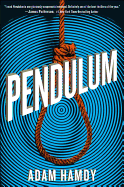
| Publisher: | Quercus | |
| Genre: | Suspense, Thrillers, Fiction, Technological | |
| ISBN: | 9781681441351 | |
| Pub Date: | June 2017 | |
| Price: | $26.99 |
| Mystery & Thriller |
by Adam Hamdy
Adam Hamdy's high-octane novel Pendulum is the very definition of addictive reading. This taut cat-and-mouse thriller throws readers immediately into the action when photojournalist John Wallace awakens in his apartment to discover he's been drugged and bound. His hulking captor is a cunning serial killer in black armor whose face is hidden with a black mask and black goggles. The killer has put a noose around Wallace's neck, tied it to a rafter and is intent on making this murder look like a suicide. Through sheer luck, John is able to escape (albeit with some broken ribs and collarbone), but the murderer is constantly on his heels as he attempts to hide and piece together who is after him and why.
John Wallace is an interesting protagonist, withdrawn and adrift. While shooting photos in Afghanistan, he witnessed the massacre of innocent women and children, but though he testified against the men responsible, the case was lost and the stress from the trial ruined many relationships. Pendulum, the first book in a proposed trilogy, outpaces most psychological thrillers with the richness of its lead character and the abundance of strong, interesting supporting characters.
Some of the action is a bit far-fetched, but the pacing is relentless in a way that allows readers to suspend disbelief easily. Pendulum has so many twists, turns and surprises that the less readers know about the story, the more they'll enjoy the ride. --Kevin Howell, independent reviewer and marketing consultant

| Publisher: | Adaptive Books | |
| Genre: | Superheroes, Comics & Graphic Novels | |
| ISBN: | 9781945293177 | |
| Pub Date: | July 2017 | |
| Price: | $12.99 |
| Graphic Books |
by Jimmy Palmiotti, Justin Gray, Javier Pina
Jimmy Palmiotti and Justin Gray collaborated eight times previously to publish comics like Power Girl. While Hype involves the common story of a physically gifted superhero combatting evil forces in the world, the concept borders on pure genius.
Amanda Marr is a behavioral psychologist focused on preserving human compassion with emergent technologies. She has been coerced by the Department of Defense into socializing and teaching empathy to a super soldier named Noah Haller (called "Hype," for his hyperawareness of situations and conditions around him), but he can maintain consciousness for only 45 minutes before his body completely breaks down. Hype's first mission was a public relations disaster; his inability to decipher a cult member's reaction resulted in the fiery death of children. Amanda has just six weeks to prepare Hype for his next mission, preventing biological warfare, but she must first quell her own developing feelings for him.
Palmiotti and Gray's script is fast-paced and intelligent, rooted in believable scientific, philosophical and psychological reality despite its superhero setting. The art by Javier Pina and Alessia Nocera, while advancing the action, has a frozen quality that does not give quite the impact one would expect with such clever writing. However, this is the team's first installment, and the combined star power of Palmiotti and Gray is enough to merit a continued run. Hype has the right mix of mojo and fun to become the next big hit. --Nancy Powell, freelance writer and technical consultant
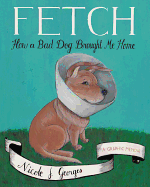
| Publisher: | Mariner | |
| Genre: | Pets, Biography & Memoir, Dogs, Nonfiction, General, Comics & Graphic Novels, LGBT | |
| ISBN: | 9780544577831 | |
| Pub Date: | July 2017 | |
| Price: | $17.95 |
| Graphic Books |
by Nicole J. Georges
Lambda Award-winning artist Nicole Georges (Calling Dr. Laura) adopted a scrappy Shar-Pei mixed-breed when she was 16 years old. Her boyfriend named the dog Beija because, he said, "It means 'stranger' in Polish." It doesn't, but the name stuck, and so did the pup.
In Fetch: How a Bad Dog Brought Me Home, Georges details her 15-year friendship with Beija, through relocating from Missouri to Oregon, unstable housing, shattered dreams and finding a place to call home. Rescued from the pound, Beija is temperamental, protective and loud, but over time Georges figures out how to care for her. The rules are eventually distilled to these: don't bend at the waist, don't touch her sides, don't pick her up, don't sit near her bed and don't be a man, a child or another dog.
Eventually, in Portland, Ore., Georges cultivates a reputation as a zinester and artist in the punk scene, with Beija always nearby as her erratic sidekick wearing a warning scarf: Don't pet me. Together they weather breakups, coming out of the closet, a stint at an animal sanctuary and the overzealous attention of a pet psychic. In the process, Georges begins to recognize the needs and neuroses she shares with her dog, and how they can better care for one another.
Fetch is beautiful. Georges's artwork is inviting and frank as she tells a touching story of companionship and personal growth. A dog pack of two, she and Beija form a special bond, a friendship that hits home. --Dave Wheeler, associate editor, Shelf Awareness
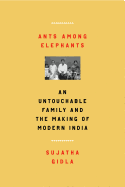
| Publisher: | Farrar, Straus & Giroux | |
| Genre: | Biography & Autobiography, India & South Asia, Discrimination & Racism, Cultural Heritage, Asia, Literary, History, Social Science | |
| ISBN: | 9780865478114 | |
| Pub Date: | July 2017 | |
| Price: | $28 |
| Starred | Biography & Memoir |
by Sujatha Gidla
Sujatha Gidla was born into the lowest level of India's caste system, the untouchables. She compares it to anti-black racism in the United States, and then goes on to explain, "Each caste has its own special role and its own place to live.... The untouchables, whose special role--whose hereditary duty--is to labor in the fields of others or to do other work that Hindu society considers filthy, are not allowed to live in the village at all." She goes on to list some of the thousands of restrictions placed upon this unit of society that, if violated, are often dealt with by violence or death.
In Ants Among Elephants, Gidla tells her family's history, of her great-grandparents, grandparents and parents who came of age when the caste system was still in full force, when India was becoming an independent nation, shaking off the mantle of British rule. Most of the story is dominated by Gidla's uncle Satyamurthy, who became a famous poet and leader of a Maoist guerilla group in the early 1970s, a position that forced him to go into hiding for most of his life.
Throughout, Gidla does not hide the atrocities of the caste system. She discusses how untouchable women are forced to clean public toilets using their hands, a broom and a tin plate to fill baskets to carry away the waste on their heads; how they are forced to become mistresses to those higher on the social ladder. Gidla's family history is intertwined with the evolution of Indian society, yielding a moving portrayal of one family's struggle to live. --Lee E. Cart, freelance writer and book reviewer

| Publisher: | Simon & Schuster | |
| Genre: | Biography & Autobiography, People with Disabilities, Psychology, General, Psychopathology, Neuropsychology, Social Science, Interpersonal Relations | |
| ISBN: | 9781476774046 | |
| Pub Date: | June 2017 | |
| Price: | $26 |
| Biography & Memoir |
by Jennifer Latson
To Eli D'Angelo, everyone is a friend. With his exuberant and highly sociable personality, the teenager greets strangers with affectionate hugs and rapid-fire chatter. While these qualities may seem positive and endearing, Eli's trusting nature makes him particularly vulnerable for potential harm from others.
Eli is among an estimated 30,000 people in the United States who have Williams Syndrome, a genetic neurological condition characterized by developmental delays, cardiovascular issues, visual-spatial challenges and distinct, elfin-like facial features. People with Williams often have above average musical and language abilities with certain fixations. Eli, for example, is particularly obsessed with twirling objects and floor scrubbers.
For three years, journalist Jennifer Latson followed Eli and his mother, Gayle, to explore the impact of Williams on their family. The Boy Who Loved Too Much offers a scientific overview of the condition and an easy-to-understand explanation of the genetic and hormonal factors involved. It also draws the reader into Eli and Gayle's everyday interactions and gatherings with other families affected by Williams. Latson effectively parallels Eli's emotional growth with Gayle's as she shows how the diagnosis intensifies the typical push-pull parental desire of wanting to protect a child from the world while also encouraging self-sufficiency and learning to let go.
"He'd probably be happier if he stayed a child forever. Then again, she thought, wouldn't everyone? Adolescence might be the most challenging stage of life with Williams, but it's also a challenge for every human being. Growing up is never easy. The reward isn't necessarily happiness; it's independence. But what Gayle wanted for Eli--what parents everywhere want for their children--was both." --Melissa Firman, writer, editor and blogger at melissafirman.com

| Publisher: | Little, Brown | |
| Genre: | Chemistry, Science, General, History, Physics | |
| ISBN: | 9780316381642 | |
| Pub Date: | July 2017 | |
| Price: | $28 |
| Science |
by Sam Kean
Journalist and frequent NPR guest Sam Kean (The Disappearing Spoon) has made a living out of deciphering science and making clever and entertaining what is often dry drudgery. In Caesar's Last Breath, he takes on the science of gases in his trademark effervescent, loopy style--kicking it off with the emergence of Earth from a fiery, uninhabitable atmosphere, a "dragon's breath of volcanoes."
From the planet's hellish beginnings, Kean works his way through the evolution of the atmospheric building blocks of life: oxygen and nitrogen. Biology, chemistry and geology turn quickly into comedic stories, wordplay and metaphors. The search molecularly to combine nitrogen with hydrogen to make ammonia ("the gateway to fertilizer") leads him to the eccentric 20th-century German scientist Fritz Haber and his engineer countryman Carl Bosch. The two succeeded at producing commercial quantities of ammonia and supplied the world with its agricultural bounty, but they also became the fathers of German chemical warfare in World War I and developed synthetic gasoline to fuel Hitler's war engine.
In a similar vein, Kean highlights the other key elements of Earth's atmosphere and the unusual and downright freaky stories behind their discovery. If he occasionally gets a bit corny in his search for colloquial humor, Kean can also put a metaphor right on the money--such as his description of the birth of the Earth's volatile moon as "glowing like a blackened, bloodshot eye." Irreverent, lightly scientific, Caesar's Last Breath is nonetheless a lively, rewarding journey through the evolution of Earth's gaseous atmosphere. --Bruce Jacobs, founding partner, Watermark Books & Cafe, Wichita, Kan.

| Publisher: | Bloomsbury | |
| Genre: | Survival Stories, Humorous Stories, Juvenile Fiction, Action & Adventure, Science Fiction | |
| ISBN: | 9781619639126 | |
| Pub Date: | July 2017 | |
| Price: | $17.99 |
| Starred | Children's & Young Adult |
by Katie Kennedy
Rosa Hayashi is a "science princess" from New Mexico whose parents expect great things of her. Eddie Toivonen is from Oolitic, Indiana, and doesn't have the luxury of living with parents; the only one he has is a jailbird. Eddie and Rosa are among 200 brainiac high schoolers who have traveled to Iowa to compete for two trainee spots at a NASA space agency. Both want to succeed, but Eddie must do so: "It was either exploring the cosmos for the Interworlds Agency or handing people fries back in Oolitic."
The competition is a mind-and-body workout that requires defusing a live (well, sort of) bomb and free-associating about the physical laws of the universe while in a plummeting elevator. Then comes an unplanned challenge: the Interworlds Agency's scientists perceive a gravitational anomaly, and Rosa and Eddie must travel to a parallel Earth in order to save the real one.
Katie Kennedy (Learning to Swear in America) has invented a young cast so sympathetic and disarmingly funny that even science-indifferent readers will resolve to understand the laws of physics and other geeky topics of conversation that come up alongside more typical teen concerns. What Goes Up isn't so much about what's out there as about what's down here: the miracle of unlikely friendships, the mixed blessing of privilege and the stigma of social class. As Rosa says to Eddie, "How do we know who we are under the weight of all the expectations?" --Nell Beram, freelance writer and YA author
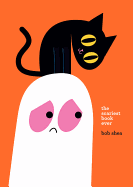
| Publisher: | Disney/Hyperion | |
| Genre: | Concepts, Humorous Stories, Animals, Words, General, Juvenile Fiction | |
| ISBN: | 9781484730461 | |
| Pub Date: | July 2017 | |
| Price: | $16.99 |
| Children's & Young Adult |
by Bob Shea
"BOO!" A spooky ghost tells the reader it "sure can't wait to find out" what monsters are hiding in those "dark woods" a few pages back. "Hope I don't spill this orange juice on my nice white-- Whoops!" it exclaims as the orange juice mysteriously upends itself directly onto its sheet. "Well, would you look at that. I'm so clumsy.... I guess you'll have to go into the scary dark woods without me." With the page turn, the reader is shown the "scary dark" woods: yellow, orange and blue pointed trees with long, black shadows, a bright yellow flower and a blue hole, all on a pink background.
The now-naked ghost peeks out from behind a chair: "Well? What did you see? A dark hole? Nothing good ever comes out of a dark hole! It's okay, you don't have to go back." The next page turn reveals a tiny white bunny in a hooded sweatshirt leaping from the hole. The bunny hops along, delivering party invitations to all the happy woodland creatures. In the house, the ghost hides, trying to use housecleaning and doughnuts to convince the reader to stay inside. "Can't you just stay here on this page?"
Young readers will see right through the fraidy-cat ghost's bravado as the cutesy animals of the "dark woods" (all depicted in bold yellows, oranges and pinks) get together to pick pumpkins and make costumes for their Halloween party. With accessible second person text and a creeped-out, naked ghost, Bob Shea's The Scariest Book Ever is a super fun, super funny read for the brave and the fearful alike. --Siân Gaetano, children's and YA editor, Shelf Awareness